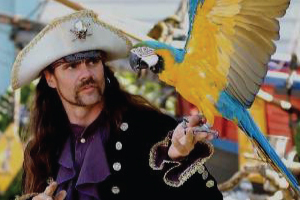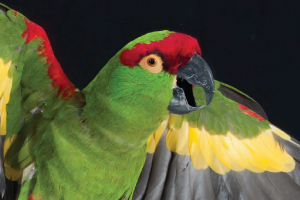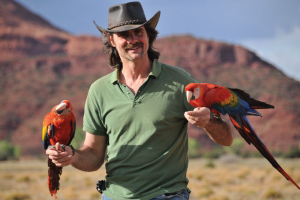Weighing The Risks
Written By Chris Biro, Copyright 2008
A freeflight list member asked: “Would you agree there is always a risk factor when flying outdoors? Why do some people think at liberty flight is more risky? I guess you mean because of the ‘Long’ time exposed being outside?”
I do not consider at liberty flying for a trained bird to be as dangerous as the time a new flyer is still in training. By that I mean, the risk per hour, is highest by a long shot for the bird that is still in training. And depending on how long this training process takes largely determines how risky the entire “being trained” event was. Also contributing to this is the aptitude of the bird and trainer. Of course once a bird is trained and is successfully flying outdoors and is no longer at risk of being lost, there still is the risk of predation or unexpected injury. These are present during training also and to some degree at an increased threat level due to lower skill levels. But once the bird is flying on a regular basis, the exposure to this lower threat is repeated far more often. So on any given day of flying, the threat is always about the same for the experienced flyers. And statistically if we look at risk by the hour, the risk is very very low. But if we look at the risk by the year, the risk appears much higher. These birds have flown without incident for thousands and thousands of hours so when an incident does occur it is a very rare occasion. However, if we look at the risks based on how many birds have been flown and how many of those have suffered incidents, then the risk looks much higher.
It is important for people to remember that the risks are there and training can only mitigate so many of them. There will always be inherent risks to flying, be it indoors or outdoors. But no doubt the more frequent the exposure to the risky conditions, the greater the chance of having an incident.
I consider my guys to have been hugely successful flyers. They have flown thousands of hours in amazing environments. And if we look at the number of incidents compared to the amount of flying time it is a very tiny percentage. And I fly more birds compared to most people. But at the same time, I have had my share of heart breaking accidents.
For some people any accident or loss is unacceptable, regardless of how many hours or years of success there were. Some people feel life in a cage or in their home is superior to facing similar risks as wild birds face. I think it is often forgotten that every wild bird each day faces the threat of some predator actively seeking to end its life. We humans don’t generally appreciate what that means since in our world we generally go our entire lives without facing such a threat even a single day. But in the animal world this is an every-day fact of life. Maybe this is why my birds seem so eager to face the day outdoors. They seem to take this risk element more comfortably than I do. Maybe they do not understand it and maybe they do. It is hard for me to believe they do not actually understand the threat potential. Each of them has certainly had a better taste of the actual risk than I have, since each has been actively chased by a hawk. And each maintains a constant stance of vigilance that suggests a keene awareness of ever present threat potential.
Yet the thought of losing a bird to an accident or predator is gut wrenching. At the same time trying to keep them contained in the house or aviary is heart breaking for me. Their actions so clearly indicate their desire to face the day outdoors. Not just their efforts to get themselves out of the house but also the way they behave once outdoors. There is no mistaking their enthusiasm for the first flight of the day. And their playful encounters with me during the day indicate they are not just wanting absolute freedom at all costs. They obviously desire to be loose to enjoy the space around our property as well as enjoy a close relationship with their favorite people.
There are some things we can do to help reduce the hawk threat. The most important are carefully selecting the safest species of bird being flown, selecting flying locations to match the skill level of the bird, allowing the bird to develop full skill and physical fitness, fly in flocks rather than single birds, and learn about the hawks themselves and their hunting patterns.
See our Hawk Identification page for information on identifying hawks.
There are very compelling arguments for both keeping pet parrots caged and letting them fly outdoors. In the end each of us must come to terms with this risk vs benefit issue.
Chris BiroResources and More
The Pirate's Parrot Show
An educationally based pirate-themed parrot show performing at state and county fairs since 1991. The Pirate’s Parrot Show is a Fun, Educational, and Interactive experience for all ages and cultures.
Bird Recovery International
One in every eight bird species in the world today is in danger of extinction and these numbers are increasing! Find out how this non-profit organization started by Chris Biro can help save and protect parrots and other birds.
Podcasts with Chris Biro
An Alternate Perspective – Enjoy these audio Podcasts of Chris with guests discussing the nature of training flighted birds. The discussions are intended to be loosely structured around a general topic.
Email Us
chris@libertywings.com
Call Us
(206) 618-2610
Contact Us
By Using the Contact Form




Article Comments